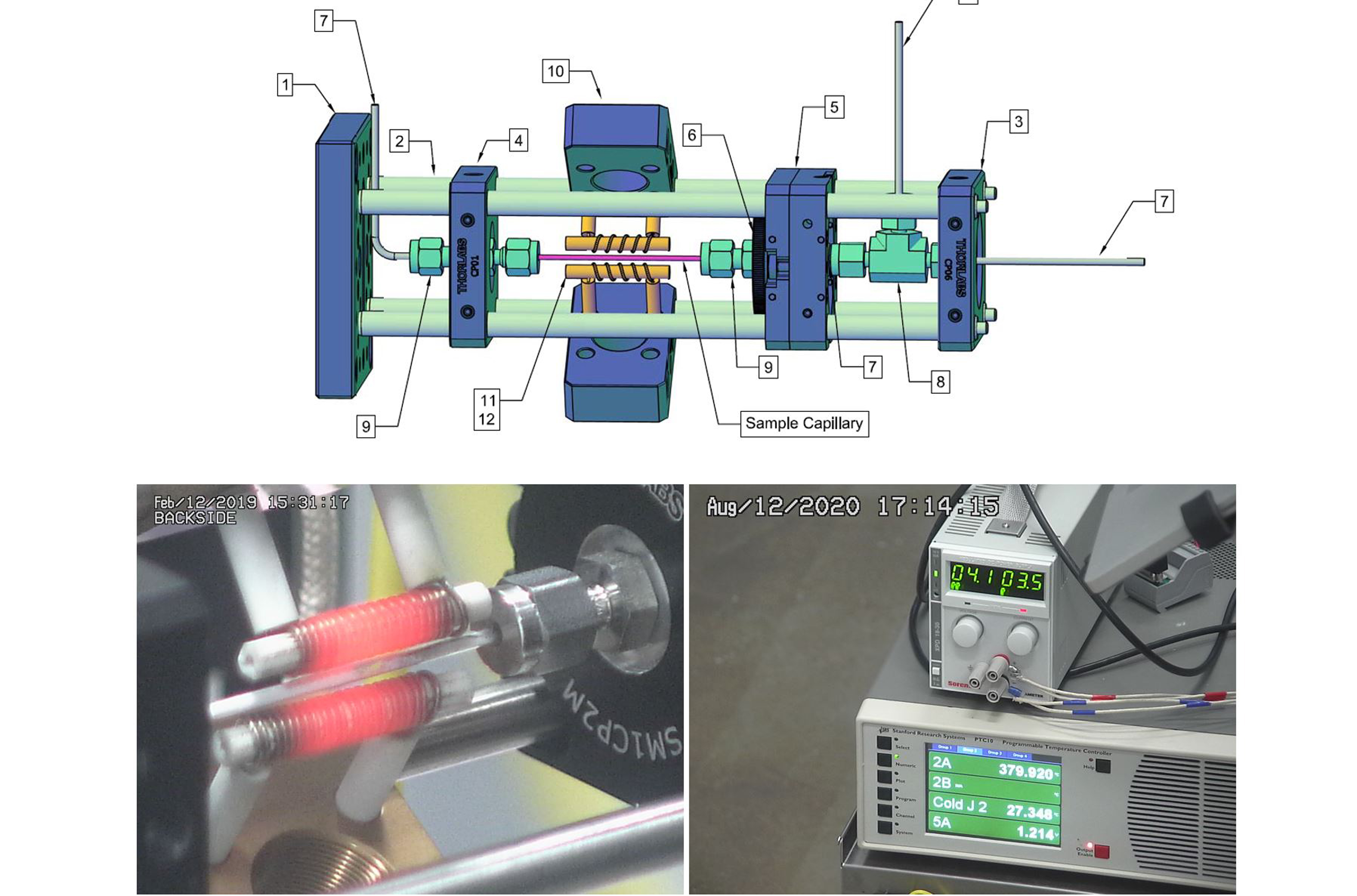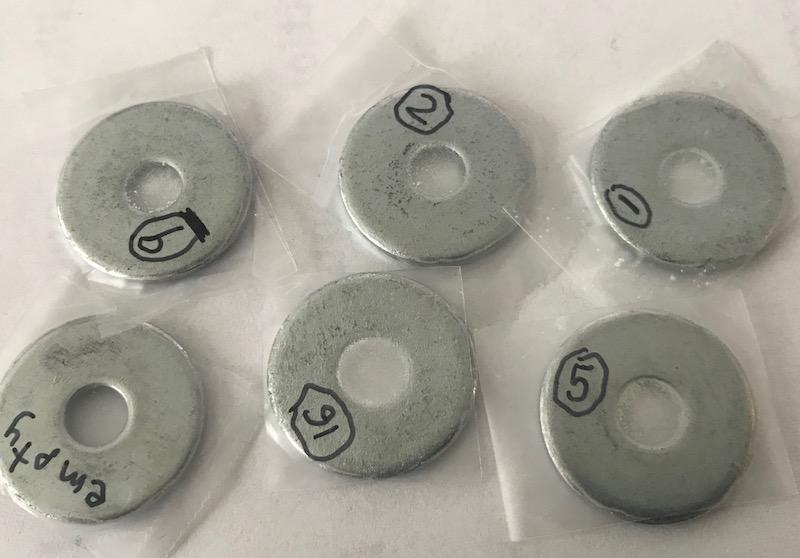USAXS sample holders available
USAXS instrument can accept a variety of relatively large and complex sample holders. The sample-to-analyzer crystal distance can be relatively large without negative influence on the measured data. Therefore it is possible to mount complicated instrumentation in place of the sample. We provide a couple of basic types of sample holders for solids and liquids, as shown below. For other sample holders and apparatus, it is best to contact the instrument scientist.
Acrylic solid sample holder
Other Solid sample holders
Acrylic Liquid Sample holder
Other Liquid Sample holders
Heaters and Coolers
Flow cell
************************************************************
Solid samples, powders
Acrylic plate
For solid samples - for remote operations or mail-in - we supply users with Acrylic plate without magnets. Each plate has 81 holes (9x9 hole pattern) and is marked with a label marking Front/Top edge of the plate to define its orientation as well as the plate number. Users can make same plates using our drawings on their own and ship/bring this plate with them with mounted samples. Drawings are linked little bit lower on this page.
Samples should be attached by tape, preferably Scotch tape or other tapes. Our best experience is with Scotch Magic tape which you can buy from any supplier of office products in the US. Equivalent products can be found in many countries around the world under different names. This tape seems to have very low X-ray absorption and scattering, so if it gets in the beam, it usually does not matter. If necessary, other tapes can be used - some prefer Kapton tape - but keep in mind, that background scattering of other tapes is higher and it is critical to properly subtract it. Talk to staff about this ahead.
Use Igor Sample survey tool to prepare sample names & coordinates (see Youtube video how to do it) and email Igor experiment to staff. Include paper copy of sample names/positions with each plate, just on case. You can use list exported from the Igor Sample survey tool - export command file as text file, edit and print. We really need for each sample only Name, X, Y, and thickness in table like below :
SampleName x [mm] y [mm] Thickness [mm]
Sample1 20 60 0.54
Sample2 20 80 1.32
SampleName : needs to be acceptable file name on all used file systems (no special characters allowed). It needs to be one word, so any spaces will be replaced by our software with "_". Also note, which techniques you want to collect on each sample plate. Options are: USAXS only, USAXS+SAXS, USAXS+WAXS, or USAXS+SAXS+WAXS.
X and Y : For definition of x and y see picture below. Distances between holes and edges on current plates are 20mm, denser populated plates are under development. Check the distances on plate you have! Exact measurement positions for each sample will be adjusted using X-ray radiography, use centers of the holes (e.g., the first one top right has x=20 and y=20).
Thickness : thickness is needed for absolute intensity calibration. If not defined, for powders, or if you need to calculate thickness from transmission (using linear absorption coefficient), assume 1.
Special instructions : some users may need to measure multiple positions per sample or there are other important instructions where or how to measure samples. Make sure these special instructions are included on EACH plate list. Each plate is measured individually.
Mounting samples to acrylic plate:
In this case, samples need to be mounted with tape to the surface of the plate.
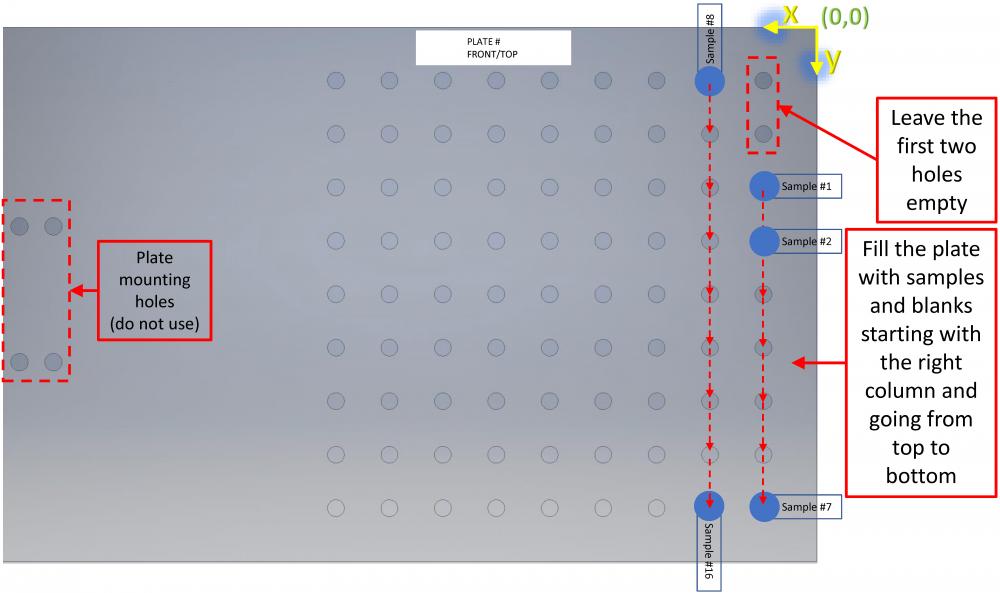
Each acrylic plate (9x9 hole pattern) is marked with a label marking Front/Top edge of the plate to define its orientation as well as the plate number. When filling the plate with samples, please follow the convention, as shown on the diagram:
- Clean the surface of old tape (if any), do not scratch it is possible.
- Leave two right top holes empty: they need to be used for the distance calibration and for the air blank
- Fill the rest of the plate with samples (or blanks) using Scotch tape starting from the right column and going down (see the diagram). Fold over the ends of the tape for easy sample removal.
- If possible, mount samples from side using the tape so the tape is not in the beam. If not possible, mount all samples with the same number of tape layers (one or two) and include "empty" tape layers for background measurements. Preferably 2-3 such "empty" samples should be included, in case of contamination of some artifacts.
Drawings: Overview Acrylic plate pdf, Detailed and 3D drawings
Other solid sample plates
Magnetic plate (local use only):
The magnets are attached to the plates using epoxy glue, so the holes in the acrylic sheet should be drilled slightly larger than ½”. (The tight fit of the magnets leads to the warping of the acrylic plate.)
Example of samples in washers:
and place on magnets with sample centered over the hole. Use preferably Scotch Magic tape to cover the samples which you can buy from any supplier of office products in the US. Make sure you include 1 - 3 "empty" washers, with the same tape but without the sample, for background measurements. Populate the plate according to instructions for acrylic plate, leaving first two open for background and calibration.
Magnetic plate (Acrylic plate looks same, except it does not have the magnets):
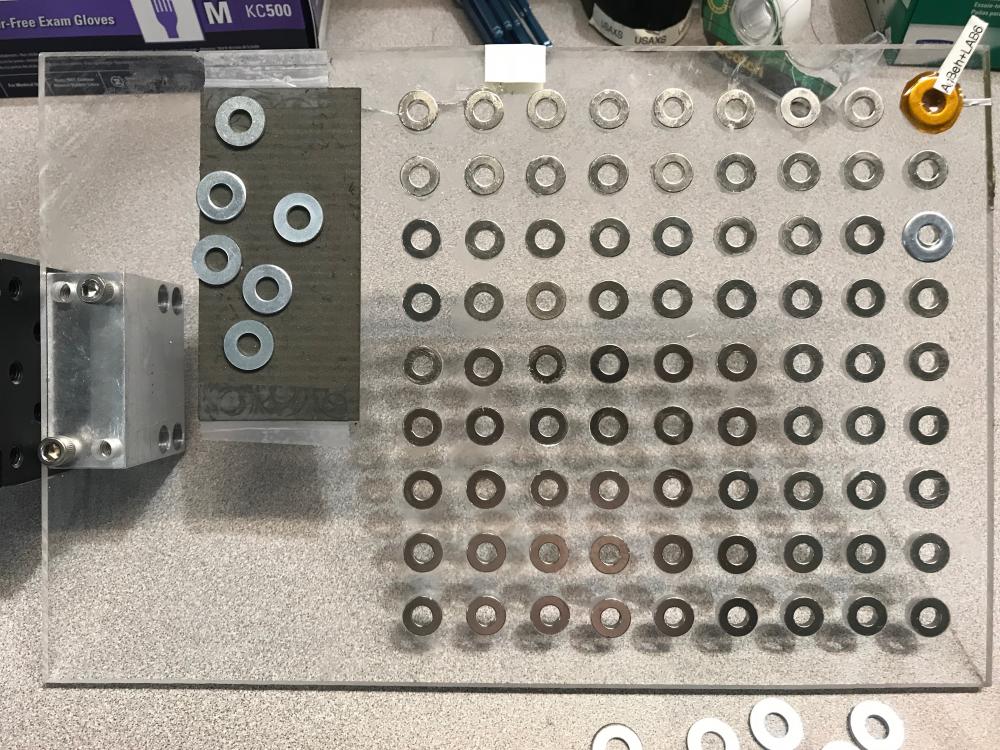
This plate can be used for samples which can be mounted in washers or other magnetic material. Not every steel washer is a good magnetic material, the cheaper the better actually. We tested and stock at the beamline these 1/4" x 5/8" OD SAE Type A Narrow Flat Washers, Low carbon steel, ($0.03/pc) washers. Ideal window material is Scotch tape (it has very low SAXS signal), Kapton is usable but keep in mind, Kapton has diffraction peak around 0.3 [1/A]. If samples can be mounted in these washers, they can be quickly attached and removed from this plate at the beamline, making setup efficient. This magnetic plate may be easier to then the Al plate.
Drawings: Magnetic plate pdf, Magnetic plate dwg.
Notes for materials:
Magnets used: N52 ring magnets (1/2"OD x 1/4"ID x 1/8"); Price:$0.56 Source: CMS Magnetics (https://www.magnet4sale.com/n52-1-2od-x-1-4id-x-1-8-neodymium-rare-earth-ring-magnet/)
Acrylic sheet used: Clear Cast Acrylic Sheet, 12"x12"x7/32; Price: $13.80 Source: McMaster-Carr, part# 8560K221 (https://www.mcmaster.com/8560K221)
Old Aluminum plates (local use only):
We also use older aluminum plates (number of plates available) with different hole patterns. Number of samples we can place on this plate is smaller and plate is non magnetic, so magnets cannot be used. Here is example of such plate we can use:
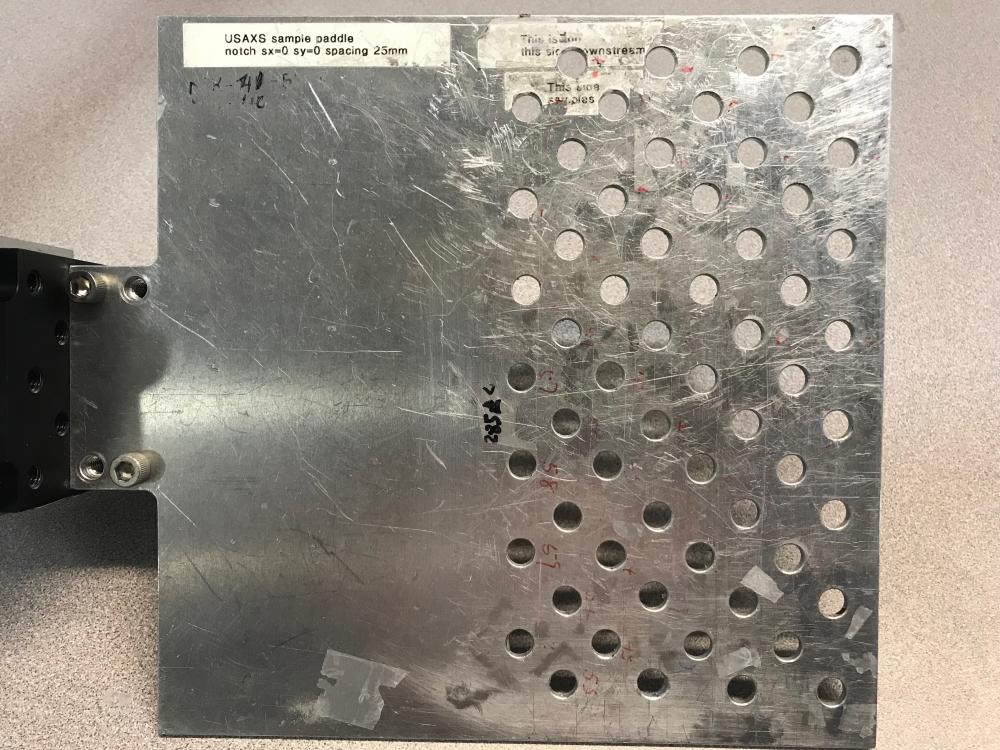
************************************************************
Liquid samples
Acrylic plate for NMR tubes - mail-in/remote
The NMR short tube holder was designed for the USAXS mail-in program. One inch long NMR tubes (5mm OD) can be specially ordered from Wilmad Labglass (www.wilmad-labglass.com, 856-691-3200): The part # WG-1000-1, contact John Ferruzzi for details ([email protected], 847-975-7423). Please ask USAXS staff if you need further details.
The NMR tube holder should be filled with tubes according to schematics below. The technical drawing of the holder is also available. Use Igor Sample survey tool to prepare sample coordinates and email Igor experiment to staff. Include paper copy of sample names/positions with each plate, just on case. You can use list exported from the Igor Sample survey tool - export command file as text file, edit and print (see Acrylic plate above for more details)
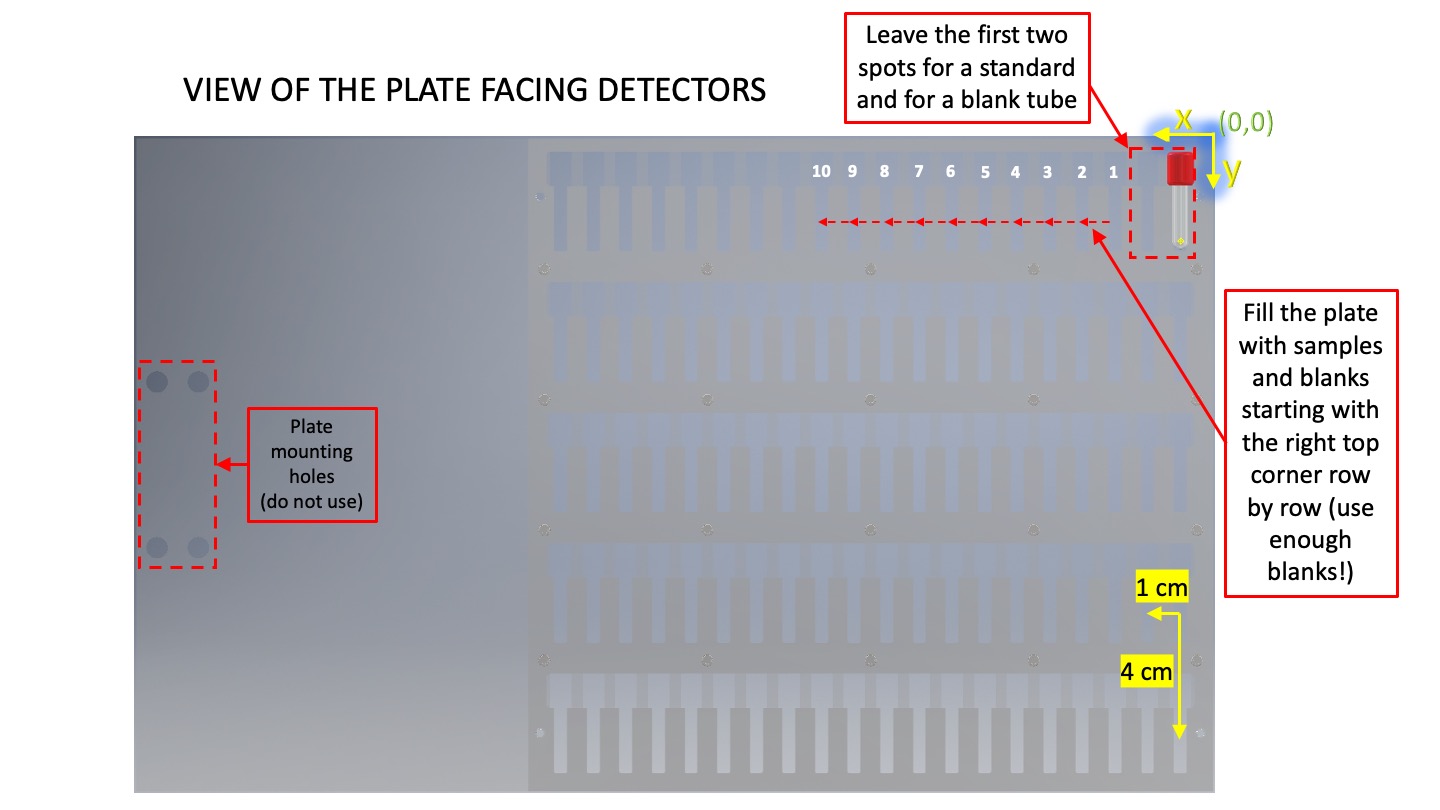
Other methods
NMR tubes for liquid samples:
For users with sufficient amount of sample volume capillaries we prefer NMR tubes. The NMR tubes we use are 4mm internal diameter, 5mm external diameter, with cap included. They provide ~3x better signal-to-noise ratio than 1mm diameter capillaries if transmission is reasonable. For water/regular light solvent based samples and 18keV or higher X-ray energies these NMR tubes work fine. Some sources are here: Fisher scientific Wilmad Thin Walled High Throughput NMR tumeb (cat. No. 16-800-161) another source is here. The length of these NMR tubes can be anything >= 80mm, 100mm seems to be the minimum standard length. We usually have some at the beamline but strongly suggest users buy their own to make sure there is enough of them. We have currently NMR tubes holder which enables us to measure 12 (+solvent & empty tube). These NMR tubes also enable recovery of the sample after measurements. We have heating block for these capillaries where users can heat the samples to about 150C.
NMR tubes holder:
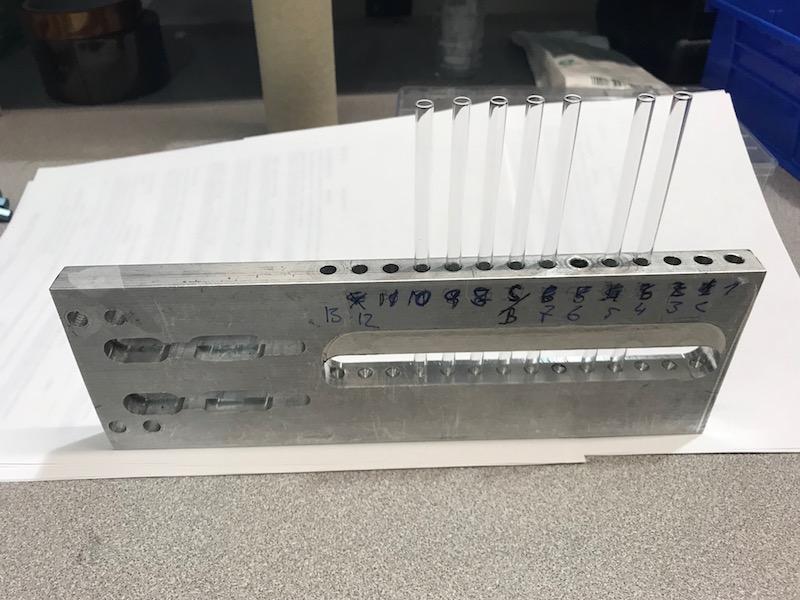
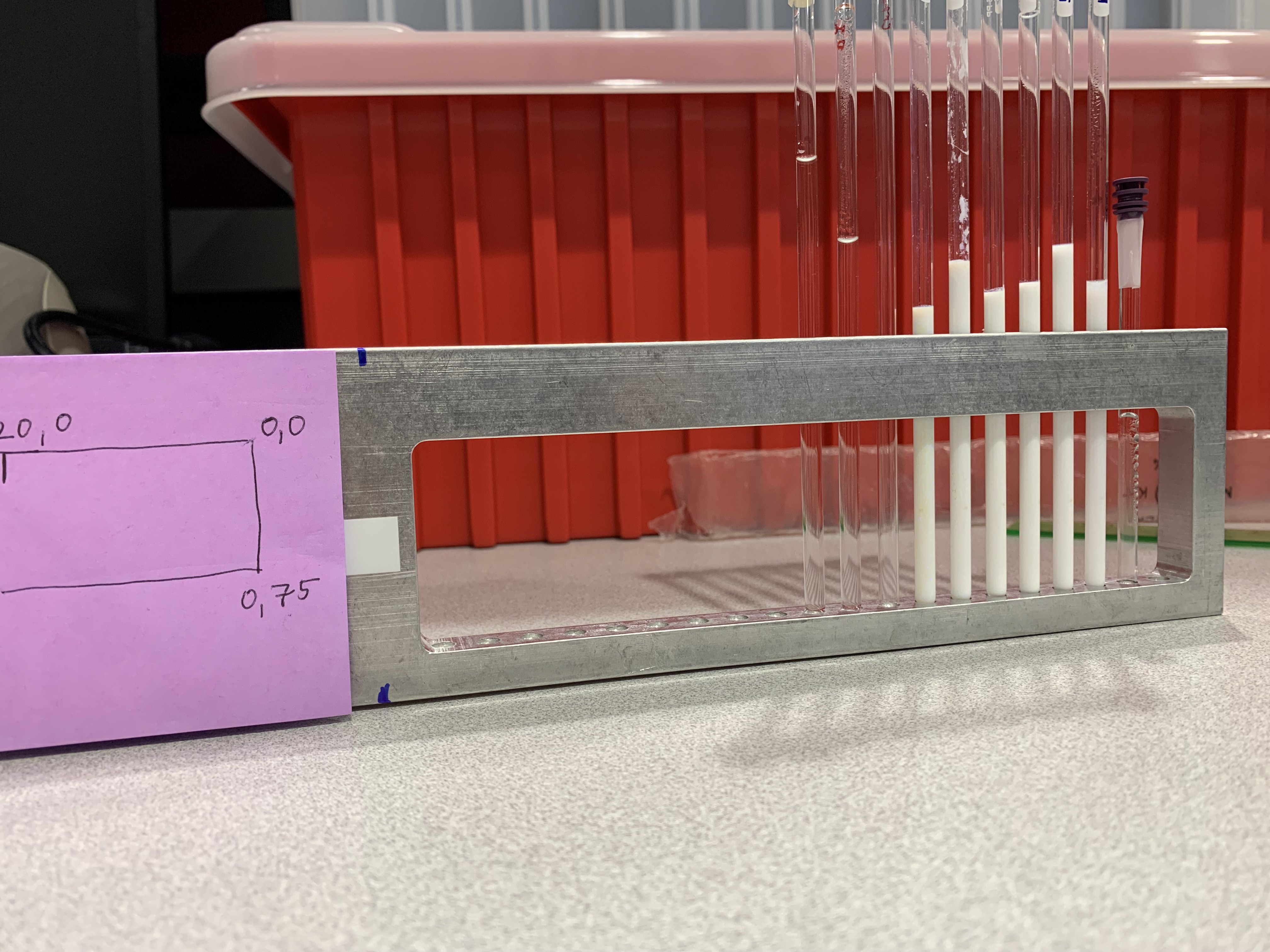
Other good option for liquids:
Melting capillaries
Alternative are melting capillaries with ~1.4mm internal diameter which we have used, they are much cheaper than dedicated X-ray capillaries and much easier to handle as they are sturdy. They work really well for samples with stronger scattering, but their exact dimensions are not guaranteed making absolute calibration less precise. One source of these is here: Kimbel Chase KIMAX Melting capillaries. We routinely have these at the beamline. Recovery of sample from these is difficult. We have heating block for these capillaries where users can heat samples up to ~85C.
Thin-wall capillaries
We can use dedicated X-ray capillaries and our experience suggests, that 1.5mm or 2mm capillaries from Charles Supper company are suitable for most needs. Thicker capillaries (2-5mm) are suitable (and better), though they get really expensive. At higher energies (21keV) we could usually measure 5 - 7 mm thickness for water based samples and thicker sample provides better signal-to-noise data (at minor cost of Q resolution). It does not matter if capillaries are glass or Quartz. Capillaries thinner then 1mm are difficult to use in USAXS due to beam size. Since Charles Supper capillaries are quite expensive, we are unable to provide these to users. We simply do not have budget for it. Recovery of sample is unlikely - and yes, they break all the time. We have heating block for these capillaries where users can heat samples up to ~85C.
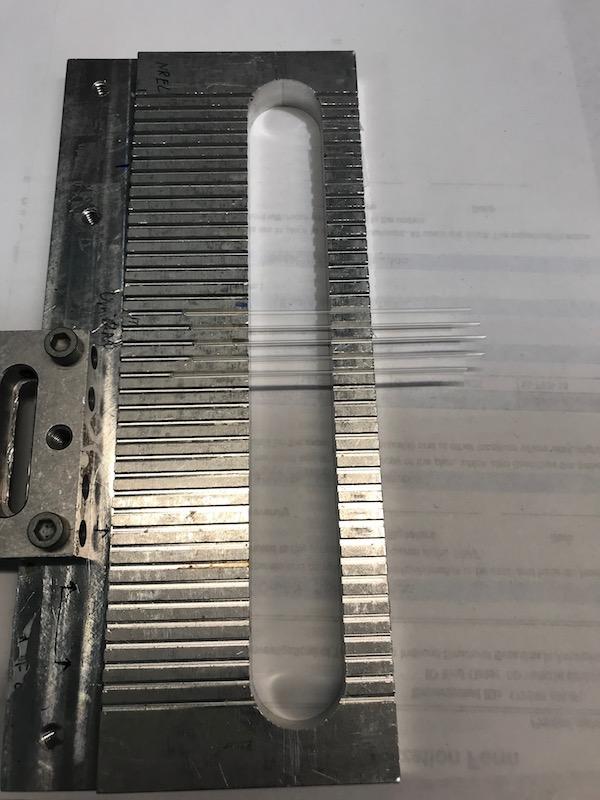
Flat-plate like holders mounted on flat plates:
Single use liquid sample holders we tested are silicone insulators from Grace bio-labs which can be combined with two ~25micron thick glass microscopy cover slips to create single use liquid containers. We can mount various sizes to sample plates - e.g., JTR20-A2-1.0, JTR13R-A2-1.0 and JTR8R-A2-1.0, all 1mm thick. For special needs there is also sheet material (JTR-SA2-1.0), so custom containers can be made. Due to use of glass cover slips these cells need to be used at X-ray energies above 10 keV. For weakly scattering samples you can use 2mm or even thicker (if available) cells, Grace-bio makes these up to 2.5 mm thickness and the plastic itself can be bought in number of thicknesses in McMaster-Carr (even though the sticky tape needs to be bought separately. At 21-24 keV you can use easily 5mm path through water based samples and get better signal-noise ratio. Alternatively, these cells can be used with Kapton sheets as window material. Minimum sample volume of the smallest container is 50 microlitres (8mm diameter opening, 1mm thick). These holders cannot be heated or cooled.
Selection of these can be also found in sigmaaldrich.com catalog, search for "Grace Bio-Labs Press-To-Seal", make sure the title has "PSA both sides". Here is example of 25pc of 13mm dia hole with 2.5mm thickness.
Note: The cost of these sample holders is quite significant for us, and due to budget limitations we are unable to provide these sample holders for free. Please, buy your own. June 2014 costs are:
JTR8R-A2-1.0 (#666105), 8 samples/pc, 25 pcs (1mm, 2mm thick SigmaAldrich).
JTR20R-A2-1.0 (#666104), 1 sample/pc, 25pcs (1mm, 2mm, 2.5mm thick SigmaAldrich).
JTR13R-A2-1.0 (#666107), 1 sample/pc, 25pcs (1mm, 2mm, 2.5mm thick SigmaAldrich).
************************************************************
Heaters and coolers
Commercial heaters
We have Linkam THM600 heating and freezing stage or Linkam TS1500 (vacuum version) at the beamline available for users use. If you would like to use this stage for your experiment, please, contact instrument scientist during scheduling phase. You need to prepare samples suitable for a specific stage. For details on the stage, please see manufacturer's web site and/or talk to the staff. We routinely stock at the beamline Nitrogen and Argonne inert gasses for protecting atmosphere.
NMR tubes heater.
This heater has been tested to over 300C if needed. At around 300C the variation in temperature among the different NMR tube positions is within 5C across the whole length of the heater. Smaller variation is likely among smaller number of NMR tubes on the right hand side in the picture.
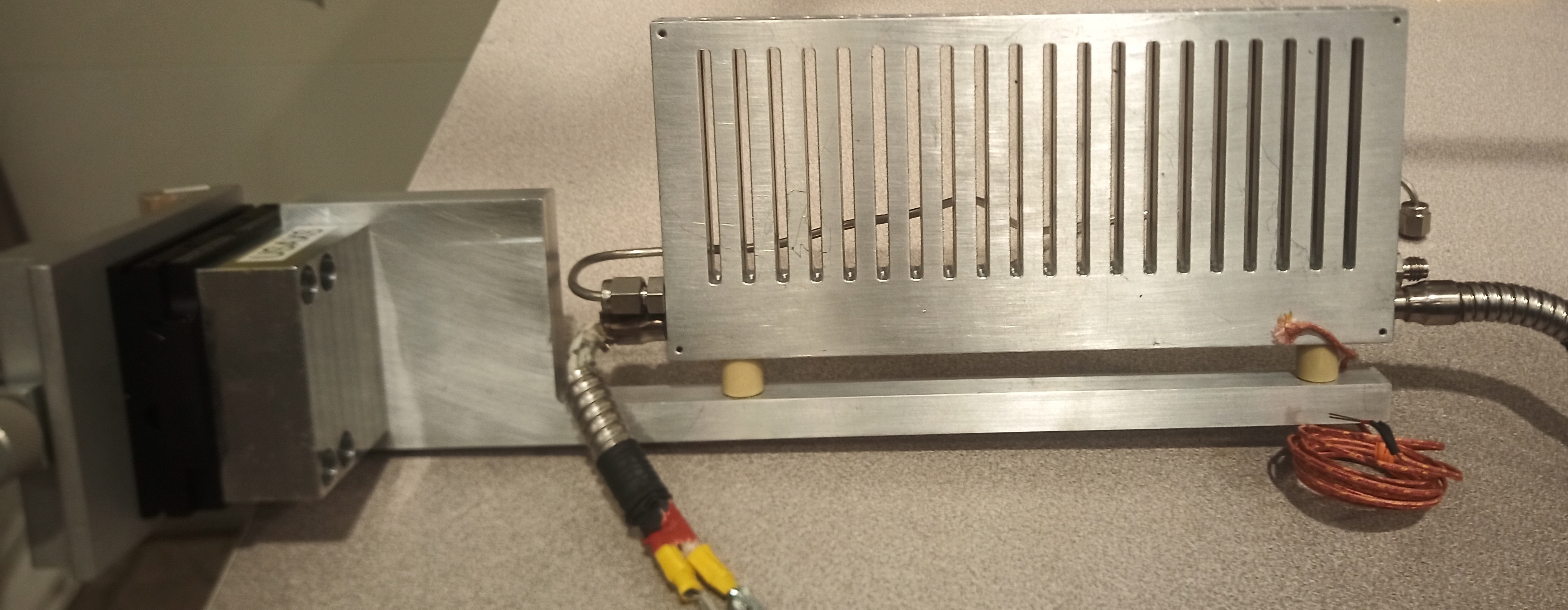
************************************************************
Flow cell experiments
Room temperature flow cell
Many users want to use flow cell to measure their liquid samples. This reduces the X-ray damage to the samples and allows users to study changes in the sample as function of time/pH/temperature/... Keep in mind, that filling flow cell is done by hand and is time consuming, Flow cells also need to be cleaned which is not always easy or even possible... We had success with using 4mm internal diameter capillary (the Wilmad NMR tubes) for flow cells and at 21keV they work very well - and they are easy to handle. Users need to provide tubing for their experiments, as it gets contaminated by the samples and needs to be replaced for each user.
This flow cell system utilizes remote controller peristaltic pump and two-syringe system, we also have heating plates to use.
Tubing needed to build a flow cell which user needs to provide:
10 feet (3 m) of polytetrafluoroethylene (PTFE) tubing, Source: Fischer Scientific, Part# 0660527 Description: Cole Parmer, Zeus Industrial Products Inc model number 94812, PTFE tubing, 1/16In ID x 1/8In OD, 25 ft/pack
Parts typically provided by beamline, users can procure if they have available funds (check with beamline first)
One foot of thin silicone tubing to connect PTFE tubing to the cell and other connectors, Source: Fischer Scientific, Part# 14179110, Description: Thermo Scientificâ„¢ Nalgeneâ„¢ Pharma-Grade Platinum-Cured Silicone Tubing; 1/8 in (OD), 1/16 in (ID); 50 ft/pack
One foot of thick silicone tubing for the peristaltic pump, Source: Fischer Scientific, Part# 14179114, Description: Thermo Scientificâ„¢ Nalgeneâ„¢ Pharma-Grade Platinum-Cured Silicone Tubing; 3/8 in (OD), 1/4 in (ID); 50 ft/pack
Selected connectors from Cole-Parmer Luer Fitting Kit, Source: Cole-Palmer, Part# EW-45511-00, Description: Cole-Parmer Luer Fitting Kit, Assorted Materials/Sizes, 477 Pieces/Pk
The glass flow cell, cut with a diamond saw from an NMR tube, Source: Fischer Scientific, Part# 16800161, Description: Wilmadâ„¢ Thin Walled High Throughput NMR Tubes; ASTM E438 Type 1 Class B glass; 5mm (OD); 0.43mm (wall thickness); 103.5mm (length); 100 piecesÂ
Two small pieces of 3/16 (ID) latex tubing to connect to the glass tube (available at the APS stockroom, Inside APS link ONLY).
Capillary flow cell - heating & gas
The USAXS gas flow cell, made of commercial Thorlabs and Swagelok parts allows virtually any gas environments (inert, reducing and oxidizing) and is particularly useful for studying powders. The temperature control of the sample is +/- 1 deg, and it is reliable across the range from ambient temp up to 1100 deg C. The flow cell can also be used at high pressures (up to 100 bar). The cell temperature is regulated by 18V-30A Sorensen power supply combined with a PTC10 controller (Stanford Research Systems).
